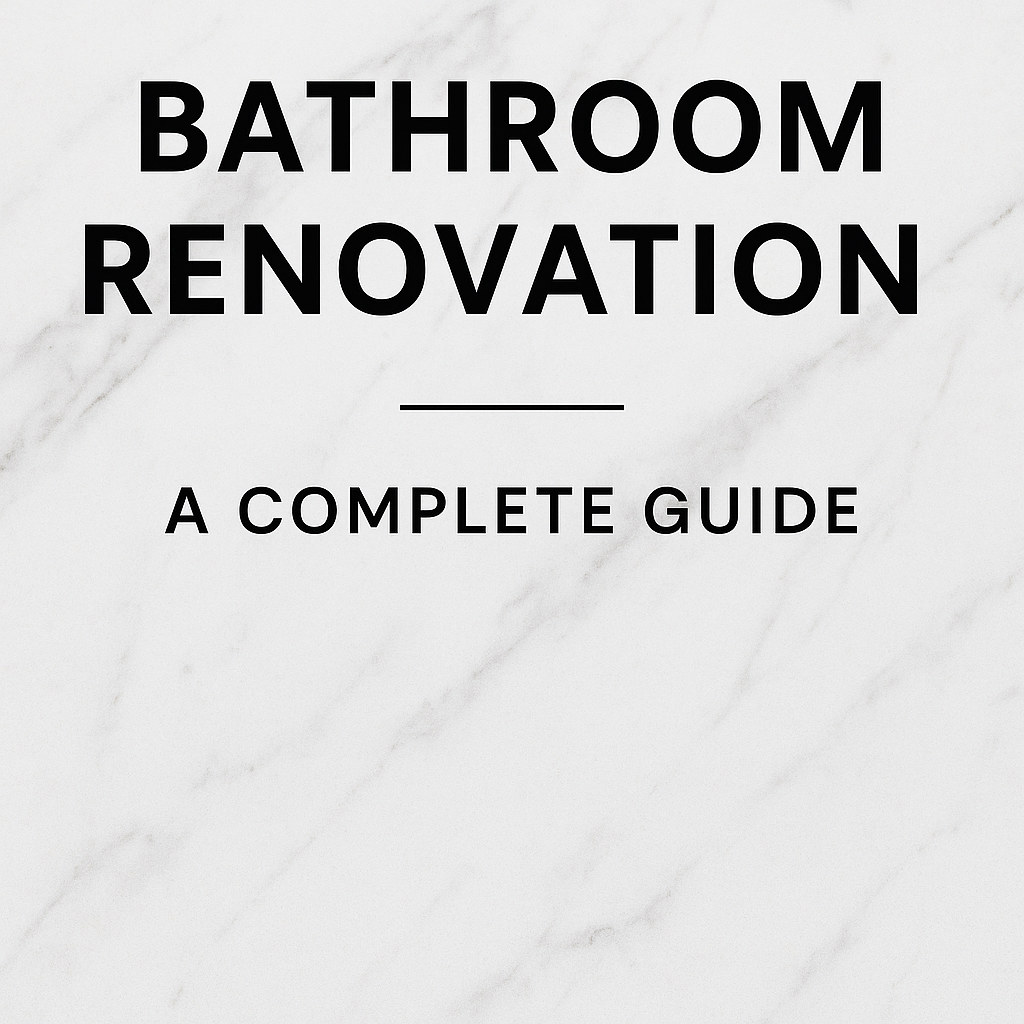A bathroom renovation is one of the most rewarding home improvement projects you can undertake. Whether you’re updating a tired design, improving functionality, or increasing your home’s value, a well-executed bathroom remodel can significantly enhance your daily living experience.
In this complete guide tailored for U.S. homeowners, we’ll walk you through every step of the bathroom renovation process—from planning and budgeting to choosing the right fixtures and finishing touches.
Why Renovate Your Bathroom?
1. Increase Home Value
Renovating your bathroom can offer a strong return on investment (ROI). In fact, according to Remodeling Magazine, homeowners can recoup about 60% of their renovation costs on resale. An updated bathroom is a major selling point in the U.S. housing market.
2. Improve Functionality
A new layout, better storage solutions, and upgraded plumbing can transform a cramped and outdated bathroom into a comfortable and efficient space.
3. Enhance Aesthetics
Modern fixtures, fresh tiles, and a new color scheme can breathe life into a dull bathroom, making it a space you actually enjoy using.
Step 1: Planning Your Bathroom Renovation
Assess Your Needs
Start by evaluating what’s not working in your current bathroom. Is it too small? Poorly lit? Lacking storage? List the features you want to change and improvements you’d like to make.
Define Your Goals
Be clear about your renovation objectives. Are you aiming for a luxury spa-like retreat, or a practical upgrade to boost resale value? Your goals will shape your budget, design choices, and timeline.
Step 2: Setting a Realistic Budget
Average Cost of Bathroom Renovation in the U.S.
Bathroom remodels typically range between $10,000 and $25,000, depending on size, quality of materials, and labor costs. A basic update might cost less than $10,000, while a high-end renovation can exceed $30,000.
Budget Breakdown
Here’s a rough estimate of where your money will go:
- Labor: 40-60%
- Fixtures: 15-25%
- Cabinetry & Countertops: 10-15%
- Flooring & Tile: 10-15%
- Miscellaneous (permits, design fees): 5-10%
Pro Tip: Always allocate an extra 10–15% for unexpected expenses.
Step 3: Design and Layout Considerations
Stick to the Layout (If Possible)
Changing plumbing lines adds significant cost. If your current layout works, consider keeping the toilet, shower, and sink in the same spots to save money.
Maximize Small Spaces
If your bathroom is compact, opt for floating vanities, wall-mounted toilets, and light-colored tiles to create an illusion of space.
Lighting Is Key
Layered lighting—ambient, task, and accent—can make a small bathroom feel larger and more functional.
Step 4: Choosing Materials and Fixtures
Flooring Options
Waterproof and durable flooring is a must. Consider:
- Porcelain tile: Durable, waterproof, and stylish.
- Luxury vinyl plank (LVP): Budget-friendly, water-resistant, and easy to install.
- Natural stone: High-end appeal, but requires more maintenance.
Vanities and Countertops
Popular countertop choices include quartz (durable and low-maintenance), granite (classic and natural), and marble (luxurious but costly). Choose a vanity that balances storage and style.
Faucets and Fixtures
Matte black, brushed nickel, and brass are trending finishes. Invest in quality fixtures—they’re used daily and should last for years.
Step 5: Hiring Contractors vs. DIY
When to Hire a Pro
If your renovation involves plumbing, electrical work, or structural changes, it’s best to hire licensed professionals. In many U.S. states, permits are required for such work.
DIY-Friendly Tasks
- Painting
- Installing hardware (towel bars, toilet paper holders)
- Swapping out light fixtures or mirrors
Vetting Contractors
Ask for recommendations, check reviews, and always get at least three quotes. Ensure your contractor is licensed, insured, and experienced in bathroom remodels.
Step 6: Permits and Regulations
In the U.S., most major bathroom renovations require permits—especially when moving plumbing or electrical components. Check with your local city or county building department for regulations specific to your area.
Tip: Skipping permits may lead to fines or issues when selling your home.
Step 7: Timeline of a Bathroom Remodel
A typical bathroom remodel takes:
- Planning & design: 1–3 weeks
- Demolition: 1–2 days
- Rough-ins (plumbing, electrical): 1–2 weeks
- Tiling & flooring: 1–2 weeks
- Final touches (paint, fixtures): 1–2 weeks
Total Time: 4–8 weeks, depending on scope and availability of materials/contractors.
Step 8: Eco-Friendly and Smart Bathroom Ideas
Go Green
- Low-flow toilets and showerheads reduce water usage.
- LED lighting cuts electricity costs.
- Sustainable materials like bamboo or recycled glass add eco-friendly style.
Make It Smart
Install smart mirrors with defoggers, motion-sensor lighting, or even a digital shower system for added convenience and luxury.
Final Tips for a Successful Bathroom Renovation
- Plan thoroughly before swinging a hammer.
- Communicate clearly with your contractor.
- Choose quality over trendiness for a timeless look.
- Don’t rush—rushed jobs often lead to regrets or costly fixes.
Conclusion
Renovating a bathroom in the U.S. is a valuable investment in both comfort and home equity. By planning carefully, budgeting wisely, and focusing on functional, timeless design, you can create a bathroom that serves your needs for years to come.
Whether you’re a seasoned DIYer or hiring professionals, this complete guide has equipped you with the insights needed to tackle your bathroom remodel with confidence.

Leave a Reply